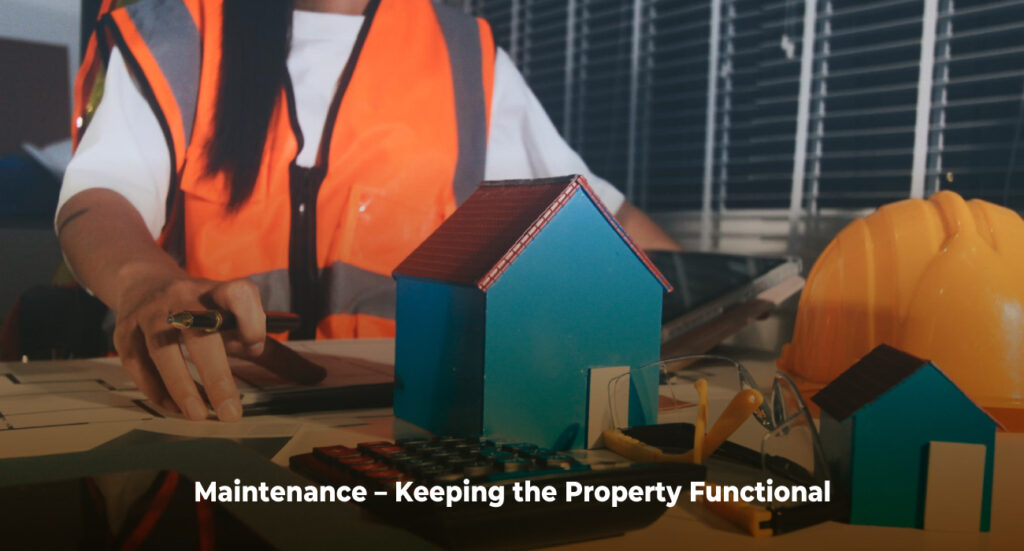Understanding Repairs, Maintenance, and Improvements in SMSF Property Renovations
thinking about doing some renovation work. But here’s the problem – everywhere you look, there’s mixed information about what you can and can’t do under a Limited Recourse Borrowing Arrangement (LRBA). Can you use borrowed funds for renovations? What types of work are acceptable, and what could land you in breach of superannuation laws? In this article, we’ll unpack the confusion and clearly explain the ATO’s stance (as expressed in SMSFR 2012/1) on repairs, maintenance, and improvements. We’ll go through what’s allowed with borrowed money, what must be funded from the SMSF’s own cash, and what is outright prohibited to keep your fund compliant.

1. Repairs – What You Can Do with Borrowed Funds
The ATO defines repairs as work that remedies defects, damage, or deterioration of an asset. Repairs restore the function of the asset without changing its character. A repair is usually occasional and partial – its purpose is to return the property to its previous state, not to make it substantially better or different.
ATO’s Explanation:
“Remedying or making good defects in, damage to, or deterioration of an asset and contemplates the continued existence of the asset. A repair is usually occasional and partial. A repair restores the function of the asset without changing its character.”
✅ Examples of Repairs (Allowed with Borrowings)
- Restoring a kitchen affected by fire damage, even adding a dishwasher that wasn’t there previously, provided it’s a minor addition and doesn’t significantly alter the overall asset.
- Replacing a roof damaged by a cyclone, using modern equivalent materials. Using superior materials may raise questions about whether it becomes an improvement, but a like-for-like replacement is a repair.
- Rebuilding a three-bedroom residential house destroyed by fire to a broadly comparable standard. Using superior fittings or appliances raises a question of degree but simply restoring it to what it was is a repair.
Key Point:
Repairs can be funded with LRBA borrowings, as they don’t create a new or different asset and are necessary to restore the property’s condition.

2. Maintenance – Keeping the Property Functional
Maintenance work is preventative in nature. It’s undertaken to prevent defects, damage, or deterioration of an asset, ensuring the continued functioning of the property in its present state. Like repairs, maintenance does not change the asset’s character and is allowed under LRBA using borrowed funds.
ATO’s Explanation:
“Work undertaken to prevent defects, damage or deterioration of an asset, or in anticipation of future defects, damage or deterioration, provided that the work merely ensures the continued functioning of the asset in its present state.”
✅ Examples of Maintenance (Allowed with Borrowings)
- Painting the house periodically to maintain its condition.
- Replacing a fence with a modern equivalent; adding a simple gate is considered a minor addition, not an improvement.
- Renewing an outdated kitchen that is functional but significantly worn, using modern equivalent materials and appliances. The changes don’t significantly improve the asset as a whole, so it’s considered maintenance.
- Routine maintenance on a building, such as cleaning, gutter repairs, or replacing worn carpets. While not explicitly listed in SMSFR 2012/1, these fit the same principle if they don’t enhance the property beyond its original function.
Key Point:
Like repairs, maintenance can be paid for with borrowed funds, as it preserves the property’s existing state and function.

3. Improvements – What You Cannot Fund with Borrowings
Improvements are where things get tricky. The ATO defines improvements as substantial alterations or the addition of significant new features that significantly change the state or function of the asset for the better. Unlike repairs or maintenance, improvements cannot be funded from LRBA borrowings.
However, improvements can be made from the SMSF’s own cash resources, provided they don’t change the nature of the asset. If the improvement changes the property so much that it becomes a “different asset” (e.g., converting a residential house to a commercial property), the LRBA rules are breached.
ATO’s Explanation:
“An improvement occurs if the state or function of the asset is significantly altered for the better, through substantial alterations, or the addition of further substantial features to the asset.”
✅ Examples of Acceptable Improvements (SMSF Cash Only)
- Converting a bedroom into a home office.
- Extending the property to add two bedrooms, an extra bathroom, or a larger kitchen.
- Adding features like a swimming pool, pergola, garden shed, or garage.
- Building a granny flat on the same land as an existing house, maintaining its residential character.
- Installing a home automation system for lighting, security, and audiovisual control.
These are considered improvements because they enhance the property but do not create a different asset. Borrowed money cannot be used for these works, but SMSF cash may be used instead.
❌ Examples of Unacceptable Improvements (Creates a Different Asset)
- Building on a vacant block of land already acquired under LRBA – this creates a different asset from bare land to a dwelling.
- Demolishing a house and replacing it with three strata units, creating multiple new assets.
- Converting a residential house into a restaurant, changing its fundamental nature and use.
These alterations breach LRBA rules because they result in a different asset, not the one originally acquired. If you fund such changes under the LRBA, the borrowing no longer qualifies for the exception under s67A, potentially causing a compliance breach.
Key Point:
Improvements cannot be funded with borrowed funds under LRBA. Only SMSF’s own money can be used, and even then, improvements must not create a different asset.
4. Why Getting This Right Matters
The distinction between repairs, maintenance, and improvements isn’t just technical jargon – it’s crucial for compliance. Getting it wrong could mean:
- Breaching the superannuation borrowing rules.
- Triggering penalties or forced unwinding of your LRBA structure.
- Potential tax consequences for your SMSF.
The ATO is very clear that borrowings are only for acquiring a single acquirable asset and maintaining or repairing it, not for improving it significantly. Trustees must carefully document the nature of works undertaken and ensure funding sources align with the rules.
What’s Next? – Stay Compliant with Expert SMSF Advice
Renovating a property in your SMSF under an LRBA comes with strict rules, and understanding these rules is the key to staying compliant. The main takeaway is this: use borrowings for essential repairs and ongoing maintenance that keep your property functional but always rely on SMSF’s own funds for improvements – and never make changes that transform your property into a different asset type. If the rules around your proposed renovation are unclear, there may be instances where you should seek a private ruling from the ATO to get certainty and avoid breaching superannuation laws.
At Investax, we specialise in helping trustees navigate SMSF property investment complexities. Our SMSF experts can assess your renovation plans, clarify what qualifies as a repair, maintenance, or improvement, and guide you on the safest funding approach. This ensures you not only protect your SMSF from breaches but also make the most of your property investment. Contact Investax today to discuss your SMSF renovation strategy with an advisor who understands every detail of LRBA compliance.
Disclaimer: The information provided in this article is general in nature and based on SMSFR 2012/1. It does not constitute legal or financial advice. Always consult a qualified SMSF professional before making decisions about renovations or funding arrangements for your SMSF property.
General Advice Warning
The material on this page and on this website has been prepared for general information purposes only and not as specific advice to any particular person. Any advice contained on this page and on this website is General Advice and does not take into account any person’s particular investment objectives, financial situation and particular needs.
Before making an investment decision based on this advice you should consider, with or without the assistance of a securities adviser, whether it is appropriate to your particular investment needs, objectives and financial circumstances. In addition, the examples provided on this page and on this website are for illustrative purposes only.Although every effort has been made to verify the accuracy of the information contained on this page and on our website, Investax Group, its officers, representatives, employees and agents disclaim all liability [except for any liability which by law cannot be excluded), for any error, inaccuracy in, or omission from the information contained in this website or any loss or damage suffered by any person directly or indirectly through relying on this information.





